
Figuring out how to patent an idea can be overwhelming—especially for startups and innovators new to intellectual property. A patent grants exclusive rights to make, use, or sell your invention, typically lasting 20 years. It’s one of the most powerful tools to protect your ideas, deter copycats, attract investors, and build long-term value. But the traditional patenting process is slow, complex, and often expensive.
In 2025, artificial intelligence is changing that. Platforms like PatSnap’s Eureka AI Agent now help inventors understand how to patent an idea with speed and precision. From early-stage novelty checks to invention disclosures and freedom-to-operate (FTO) analysis, Eureka’s specialized AI agents streamline every step. These tools handle repetitive tasks, reduce human error, and provide real-time insights—empowering teams to focus on innovation, not paperwork.
Unlock Faster, Smarter IP Decisions – Start Using PatSnap Eureka AI Agent Today!
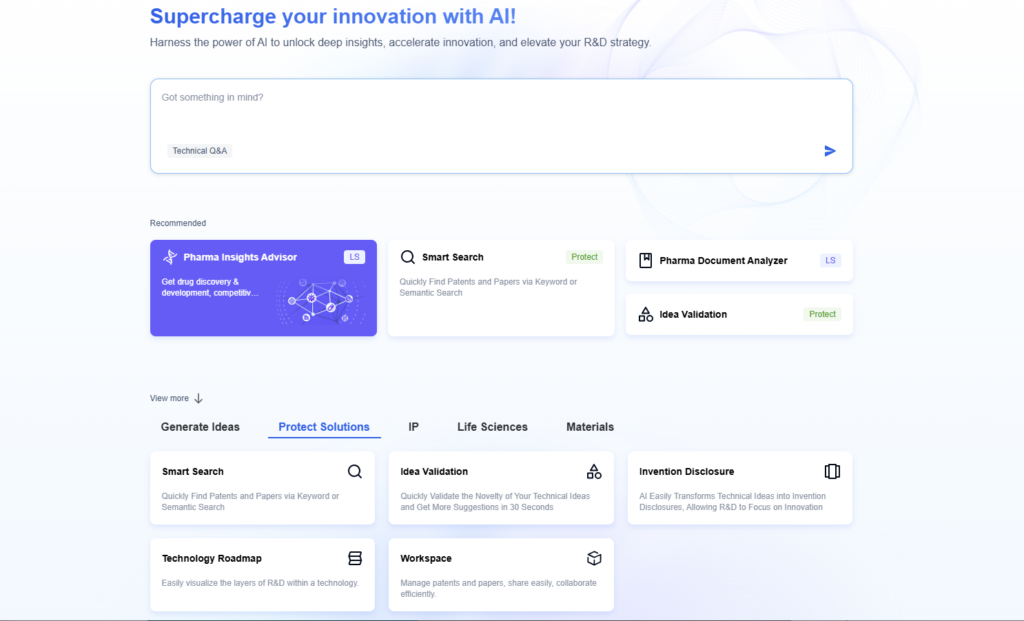
This article will walk you through the full process of how to patent an idea today and show how AI tools like Eureka can simplify and strengthen your entire IP journey.
1. Evaluate Your Idea and Patentability
Before drafting a patent, it’s important to evaluate your invention’s patentability and market potential. The United States Patent and Trademark Office (USPTO) encourages inventors to ask key questions early. These include: Who qualifies to apply for a patent? What types of inventions are eligible? How do you confirm your idea is novel? Asking these questions helps determine whether your invention is truly innovative and legally protectable.
Make sure your invention addresses a specific technical problem and offers a distinct solution. Simply improving an existing idea isn’t always enough. Your invention must stand apart from prior solutions in both concept and application. Performing a patentability search at this stage is essential. This process reveals similar inventions already published in global patent databases. It helps assess your invention’s uniqueness and signals its potential value in the market. Early searches can prevent wasted time and money spent on ideas already protected by others.
Smart Tools for Early-Stage Innovation Assessment
To streamline this evaluation, AI-powered tools can speed up research and reduce uncertainty. PatSnap’s Eureka AI platform offers a suite of agents tailored to early-stage innovation assessment. These tools help researchers, startups, and R&D teams validate ideas before investing in formal patent filings.
- Quick Research automatically generates in-depth technical reports based on your invention’s focus area. It highlights trends, competitive landscapes, and gaps in the market. This gives you a broader view of the current technology space, helping you spot opportunities or overlaps.
- Find Solutions uses the TRIZ innovation method to suggest new technical directions. It analyzes your invention’s core function and recommends related solutions or enhancements. This agent is especially helpful when exploring alternative methods or materials.
- Solution Feasibility Analysis assesses whether your proposed solution is practically achievable. It helps teams avoid pursuing ideas that lack technical grounding or real-world implementation potential.
- DFMEA Assistant runs automated Failure Mode and Effects Analysis. This identifies design flaws or risks early in the development cycle. It enables teams to correct weaknesses before investing further time and resources.
- Technical Q&A provides instant, reference-supported answers to technical questions. You can ask about scientific principles, material properties, or process options and receive accurate, summarized insights.
Together, these AI agents help refine your invention into a more competitive and patent-ready concept. They reduce the risk of redundancy, highlight improvements, and ensure the invention is both practical and protectable. By starting your patent journey with Eureka’s AI tools, you can build a stronger foundation for every stage that follows.
2. Conduct a Novelty (Prior Art) Search
Next, you must confirm that your invention is truly new. Normally you cannot get a patent if your invention was already publicly disclosed. This means you should search existing patents and literature worldwide. Use patent databases (USPTO, EPO, WIPO) and academic journals to look for similar ideas. For example, the USPTO notes that “a search of all previous public disclosures should be conducted, including foreign patents and printed publications” before filing.
Before you file a patent, make sure your invention hasn’t already been disclosed. A patent only protects new and original ideas. If someone else published your concept before you applied, your patent can be rejected. That’s why a global novelty search is one of the most important steps in the patent journey.
Traditional novelty searches require checking patent databases like the USPTO, EPO, and WIPO. They also involve scanning research journals, technical papers, and even non-English publications. This manual process is slow, overwhelming, and often misses subtle but critical prior art.
With PatSnap’s Eureka AI-powered Novelty Search Agent
You begin by entering a simple description of your invention. It can be in plain language or technical form. The agent immediately breaks it down into key features using natural language processing. For example, it identifies terms like “camera,” “text recognition,” and “image display,” and turns them into search elements.
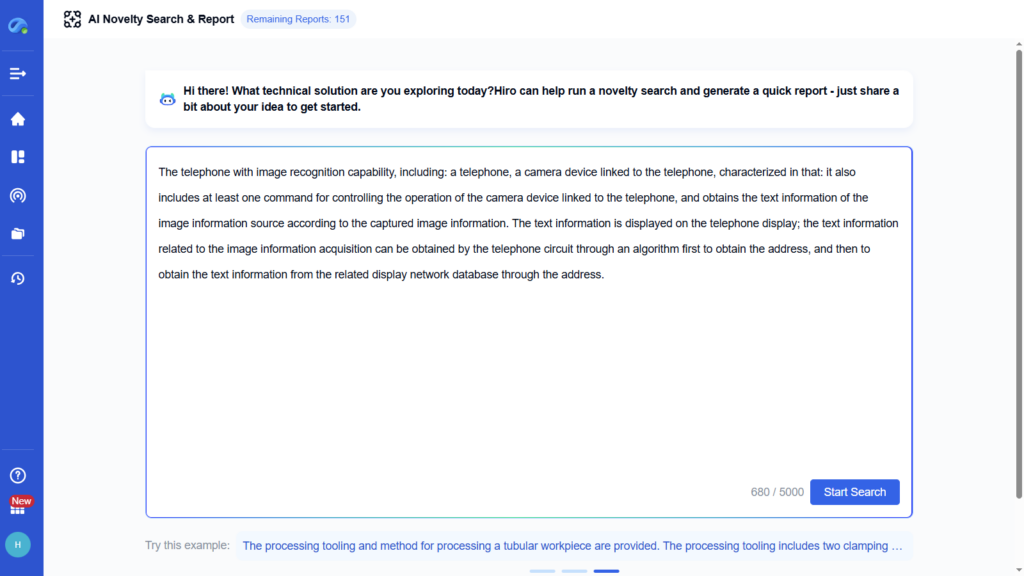
Next, the AI confirms each technical feature and allows you to adjust or remove any. You stay in control of what gets searched. Once confirmed, the Eureka agent begins a multi-round search. It first runs a semantic search to find conceptually similar patents. This helps catch inventions that use different words but share the same ideas.
Then it performs a classification search based on patent classification codes relevant to your field. After that, the agent launches multiple keyword searches, using smart variations and combinations. Finally, it runs a citation and patent family expansion. This step uncovers hidden relationships between known references and other potentially relevant documents.
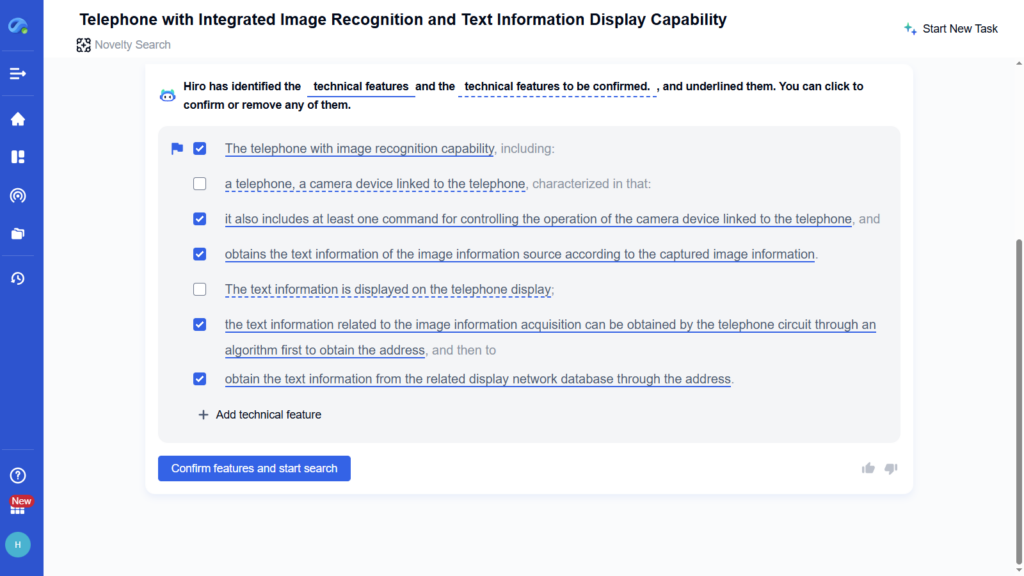
As the search runs, you can monitor its progress in real-time. Eureka reports the number of matched results, how much time was saved, and the top hits. For each high-similarity match, it shows exactly which technical features overlap with your idea. This includes a side-by-side comparison of your invention versus each prior patent.
After the search, the system generates a structured novelty report. The report includes your invention’s extracted features, a list of top references, a similarity score, and legal status. You’ll also see an appendix showing search strategies and synonyms used. This clarity helps you or your legal team decide whether to continue, refine the idea, or explore new claim scopes.
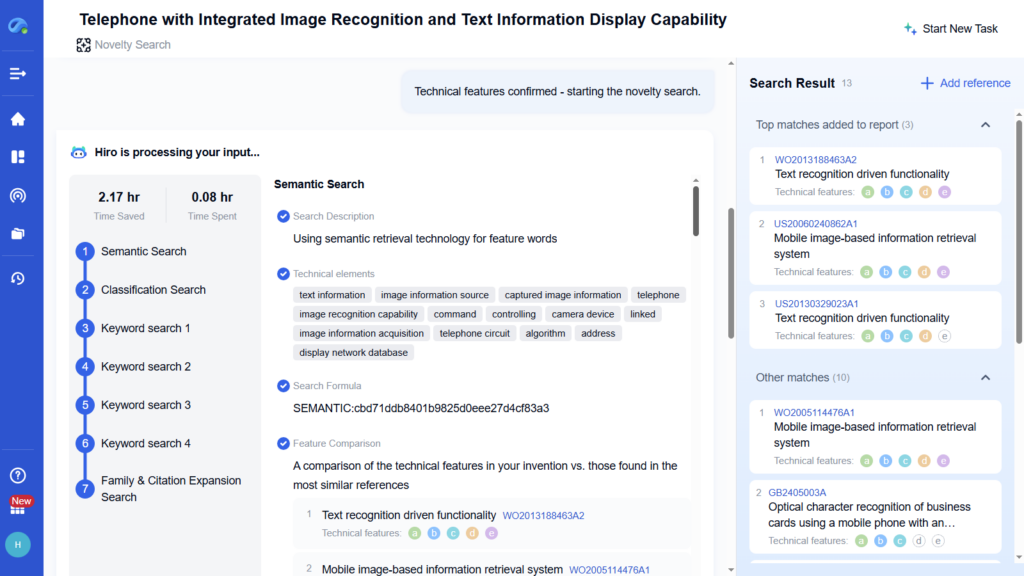
Don’t overlook foreign-language patents. Eureka’s built-in Patent Translation Agent instantly translates relevant non-English patents into English. This eliminates language barriers and ensures you don’t miss crucial global prior art.
By using AI to power your novelty search, you reduce time, gain confidence, and uncover competitive intelligence early. This step is essential not just for proving novelty, but for building a smarter patent strategy from day one.
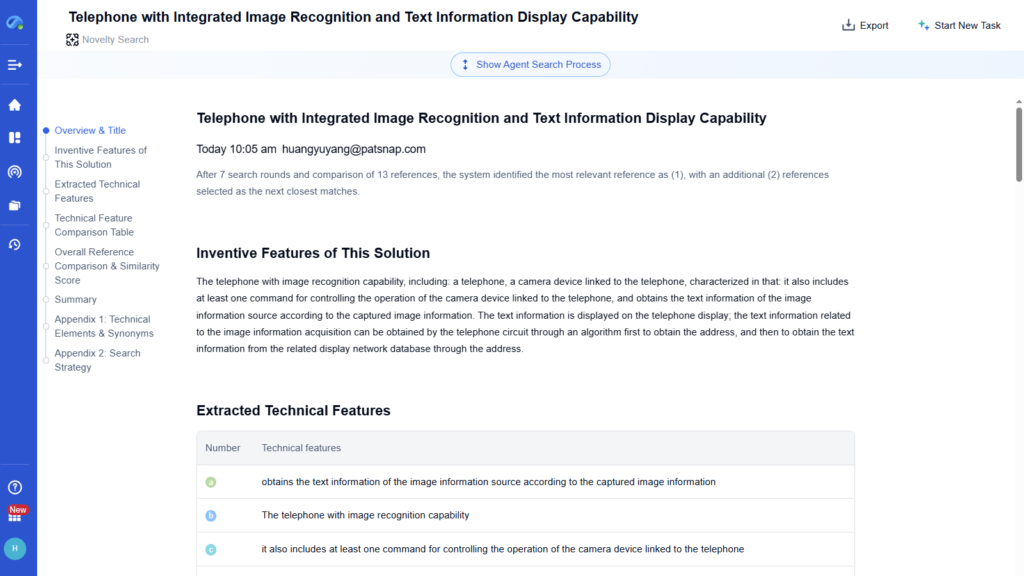
3. Draft Your Patent Application
Once you confirm your idea is novel, it’s time to draft the patent application. In the United States, you’ll need to file a non-provisional (utility) application. This document includes several key parts: a written specification, at least one claim, drawings if needed, an inventor’s declaration, and the required filing fees.
The specification explains how to make and use the invention. It should describe each technical feature clearly and logically. The goal is to help someone skilled in the field understand and replicate your invention. The USPTO advises inventors to write in clear, full, concise, and exact terms. This clarity is critical for legal protection and examiner approval.
A well-written application starts with a background section. Here, you describe the problem your invention solves. Then, explain your solution with detailed components, materials, or process steps. Claims are the heart of the patent. These define exactly what your patent protects. Make claims specific enough to avoid rejection, but broad enough to cover variations. Visuals also help. Include diagrams or labeled drawings that highlight your invention’s structure or use cases.
Use concrete examples. Avoid vague or abstract language. Patent attorneys often say to write with litigation in mind—make it strong enough to defend in court.
PatSnap’s Eureka AI platform helps speed up this entire drafting process. The Patent Drafting agent analyzes your invention description and auto-generates a draft specification and claim set. This gives you a solid first draft to refine further. If you need clarification on technical terms or phrases, use the Technical Q&A agent. It provides quick explanations and accurate rewording. Planning to file internationally? Use the Patent Translation agent to convert your draft into different languages instantly.
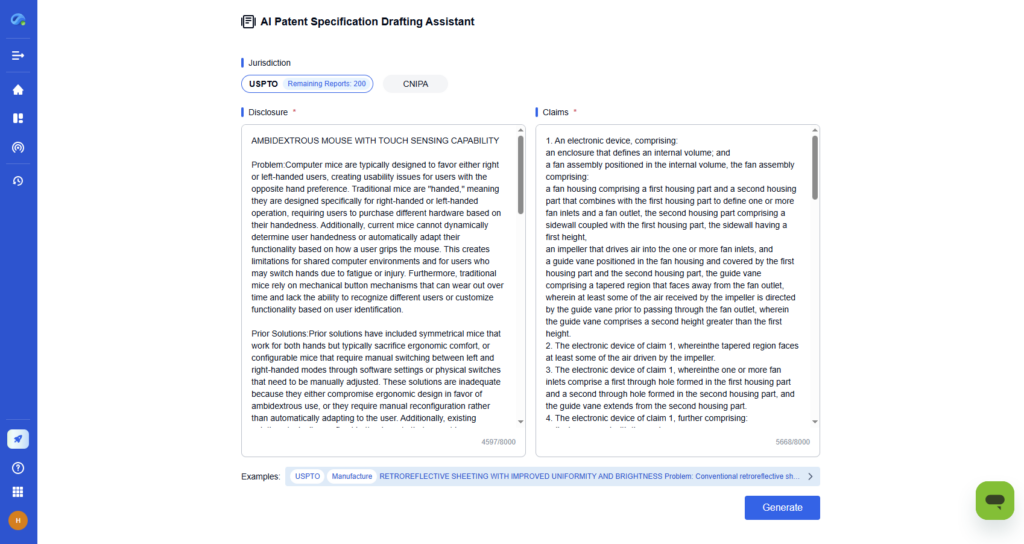
These AI tools save time, boost accuracy, and help you focus on perfecting your invention’s story. Instead of starting from scratch, you get a head start with a structured, professional draft tailored to your idea.
4. File Your Patent Application
Once your patent draft is ready, submit it to the right office. In the U.S., use the USPTO’s Patent Center to file online. Many inventors begin with a provisional application. It’s faster, cheaper, and locks in your priority date.
This filing gives you 12 months to test the market or refine your invention. You must file a non-provisional application within that time to keep your priority. The USPTO states you can also file a PCT or foreign application during this window.
A non-provisional application must include your specification, at least one claim, any drawings, and a signed declaration. This version is fully examined and can lead to an issued patent.
Expand Internationally with the Right Strategy
For global protection, follow either the Paris Convention or the Patent Cooperation Treaty (PCT).
Under the Paris Convention, file in other countries within 12 months of your original filing. You can claim your U.S. filing date in places like Europe, China, or Japan.
The PCT route is broader. You file one international application that covers over 150 countries. File through a Receiving Office like the USPTO. The PCT gives you up to 30 months from your first filing to enter national phases. This delay helps manage cost and filing decisions.
Every country requires novelty, utility, and inventive step. But the rules vary. For instance, the U.S. offers a one-year grace period for public disclosures. Many countries do not.
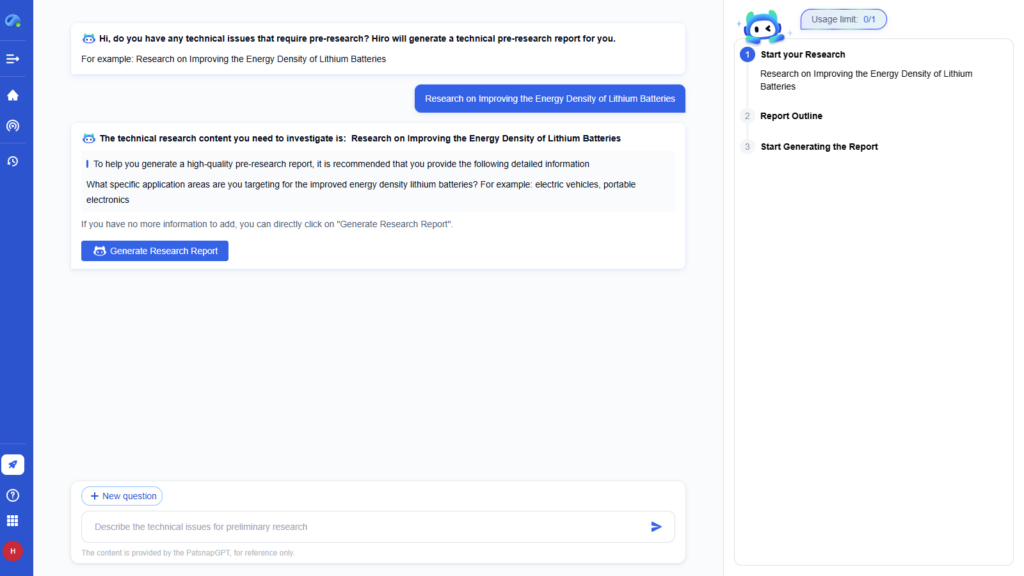
Use Eureka AI tools to streamline this process. Patent Translation helps you file in non-English markets with accurate AI-driven results. Quick Research monitors patent updates and competitive filings while you wait.
Combining a smart global strategy with AI support ensures you stay ahead and minimize risk.
5. Perform Freedom-to-Operate (FTO) Analysis
After you file a patent—or once it’s granted—conduct a Freedom-to-Operate (FTO) analysis before going to market. FTO helps confirm that your product won’t infringe any active third-party patents. Owning a patent doesn’t automatically give you permission to sell your invention. Patent rights allow you to block others but don’t guarantee you can use the idea yourself.
Start by running a clearance search. This search checks for active patents that cover features of your product. PatSnap’s FTO Search makes this process faster and easier. The AI scans global patent databases and finds claims that could overlap with your invention. It highlights patents that might create legal risk before you launch.
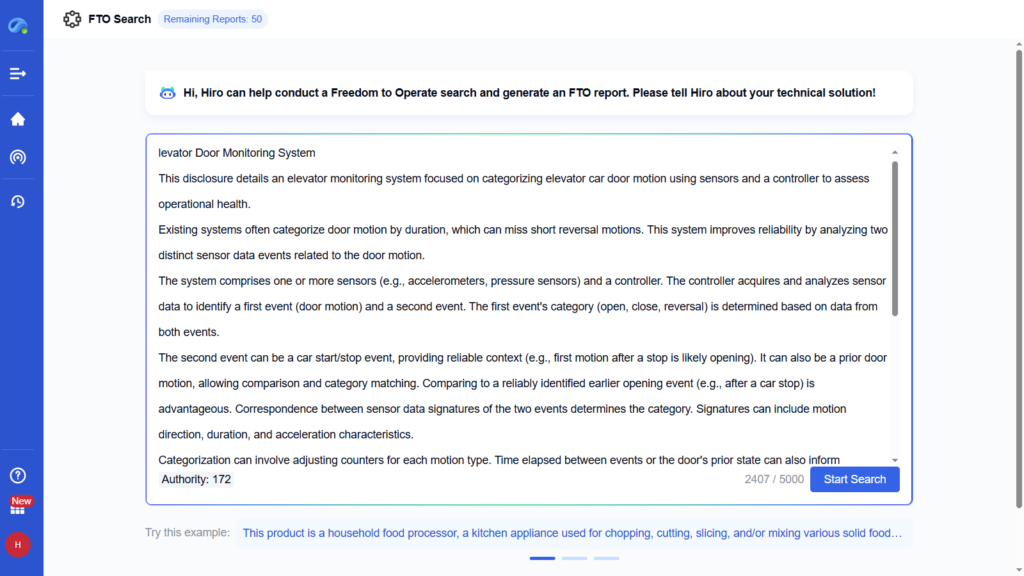
If your product involves visual or design elements, use Design FTO Search. This tool scans design patent filings to find visual similarities. Both FTO agents reduce risk and uncover conflicts early. IP experts say an FTO search is one of the best ways to avoid infringement.
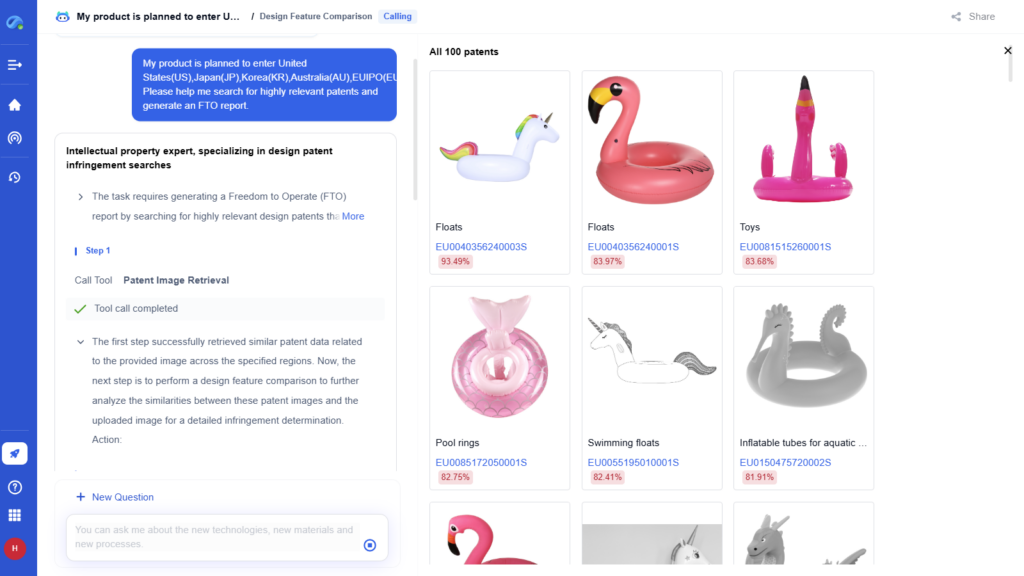
If the AI flags potential issues, you still have options. You can redesign your product to avoid those patents. You can also pursue licensing agreements with the patent holders. The Technical Q&A tool helps here, too. It answers questions about competitor patents and suggests workarounds or technical changes.
By using AI-powered FTO tools, you cut weeks of manual searching into minutes. This gives your team fast, reliable insight—and peace of mind—before going to market.
U.S. vs International Patenting: Key Differences
The U.S. and global patent systems share key requirements like novelty, inventive step, and usefulness. However, they differ in procedures.
Since 2013, the U.S. has followed a first-inventor-to-file system under the America Invents Act. The U.S. offers a 12-month grace period for an inventor’s own public disclosures. Many countries provide shorter grace periods or none at all. Most utility patents last 20 years from the earliest filing date. To keep them active, inventors must pay maintenance fees.
There is no single “worldwide patent.” You must apply in each country or regional office for protection. A PCT application doesn’t grant a patent but acts as a unified starting point. Eventually, you must enter national phases in regions like the EPO, JPO, or CNIPA. Each office will review and grant patents independently. Costs and requirements vary widely by country.
For example, Europe requires translations and national fees when validating patents across member states. These administrative tasks can create delays or extra expenses.
Eureka’s Patent Translation tool simplifies these challenges. It handles multilingual filings and helps navigate regional requirements more efficiently. Eureka also supports jurisdiction-specific research with AI-enhanced insights.
By understanding regional rules and using the right tools, inventors can protect their ideas worldwide with less friction.
Conclusion
Patenting an idea involves multiple careful steps – evaluating the invention, searching for prior art, drafting claims, filing applications, and checking for infringement. Each stage can be time-consuming, but AI-driven solutions like PatSnap Eureka are transforming the process. By leveraging tools for novelty search, automated drafting, translation, and FTO analysis, inventors and startups can work much faster and with greater confidence. In essence, combining solid patenting practices with AI assistance ensures that your innovative ideas get the broadest protection possible.
Summary of Eureka AI Tools by Patenting Stage:
| Patenting Stage | Eureka AI Tool(s) | How It Helps |
|---|---|---|
| Idea & Concept Evaluation | Quick Research Find Solutions Feasibility Analysis DFMEA Assistant Technical Q&A | Generates tech landscape reports; explores inventive solutions; checks feasibility and design risks; answers technical questions. |
| Prior Art Search (Novelty) | Novelty Search Patent Translation Quick Research | Fast AI-driven patent and literature search; translates foreign patents; ensures invention is novel. |
| Patent Drafting | Patent Drafting Patent Translation Technical Q&A | Auto-generates draft specifications and claims; translates text for foreign filings; clarifies technical points. |
| Filing/International | Patent Translation Quick Research | Translates applications for PCT/national filings; researches country-specific filing rules and deadlines. |
| FTO/Market Clearance | FTO Search Design FTO Search Technical Q&A | Scans patents and design publications for infringement risks; provides interpretations to avoid legal issues. |
By mapping the right Eureka tools to each step, inventors can streamline patent applications and focus on innovation while AI handles the heavy lifting.
To get detailed scientific explanations of how to patent an idea, try Patsnap Eureka.


